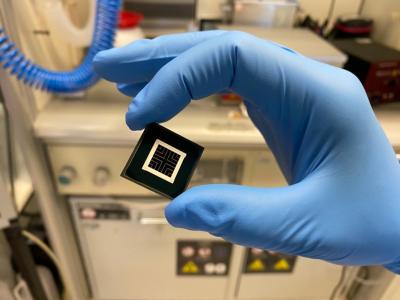Scientists at the Fraunhofer Institute for Solar Energy Systems ISE have developed a perovskite silicon tandem solar cell with 31.6% efficiency.
The new 1 cm² solar cell is special in that the perovskite layer of the top cell was deposited on an industrially textured silicon heterojunction solar cell using a hybrid manufacturing route. The successful use of textured standard silicon solar cells and the uniform application of the perovskite layer on the texturized surface are important prerequisites for the industrial production of perovskite silicon tandem solar cells.
Industrial silicon solar cells are texturized with micrometer-sized pyramids in order to guide more sunlight into the solar cell and reduce reflection losses. Using this industry standard as the basis for perovskite silicon tandem solar cells leads to higher energy yields and facilitates the integration of the new cell type into established manufacturing processes.
"Yet, the pyramid-shaped surface of the silicon solar cell presents a challenge for the top cell of the perovskite-silicon tandem," explains Dr. Juliane Borchert, Group Leader Perovskite Materials and Interfaces at Fraunhofer ISE. "In fact, a special method is needed to apply the perovskite layer evenly on the textured silicon surface. In our labs, we are working on a combined hybrid process of vapor deposition and wet chemical deposition to overcome this obstacle".
The tandem solar cell manufactured at Fraunhofer ISE incorporates results from the research projects "PrEsto" and "MaNiTU" as well as the support from an intensive exchange with scientists from King Abdullah University of Science and Technology (KAUST).
The efficiency of 31.6 % was certified by the accredited calibration laboratory CalLab of Fraunhofer ISE. It is a record efficiency for a perovskite silicon solar cell made from an industrially textured silicon solar cell and using the hybrid deposition route for the perovskite layer.
"To achieve this value, we concentrated on the perovskite top cell and in particular optimized the passivation between the perovskite layer and the electron transport layer," adds Juliane Borchert, "We expect that further increases in efficiency will be possible by making improvements on the silicon bottom cell."




